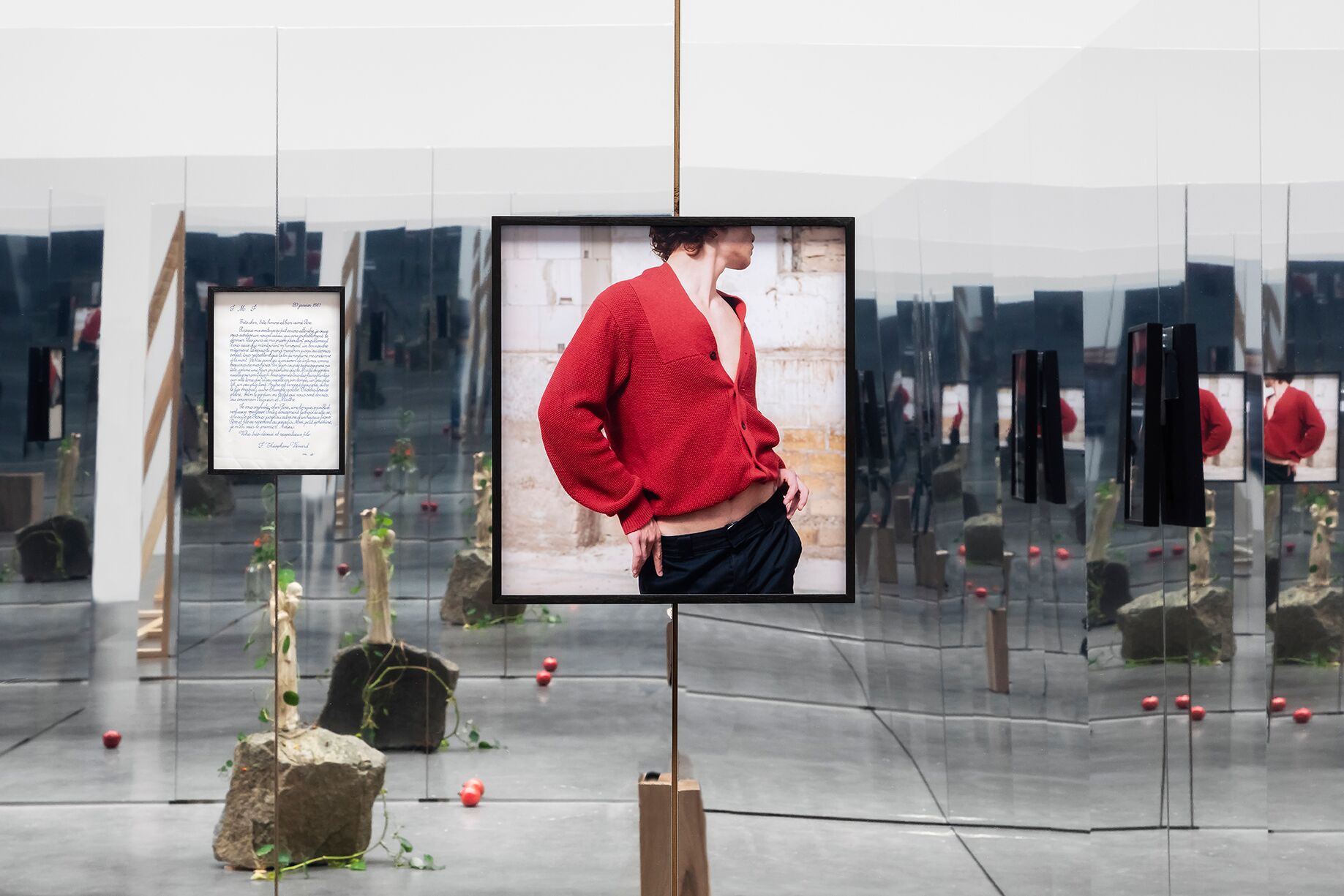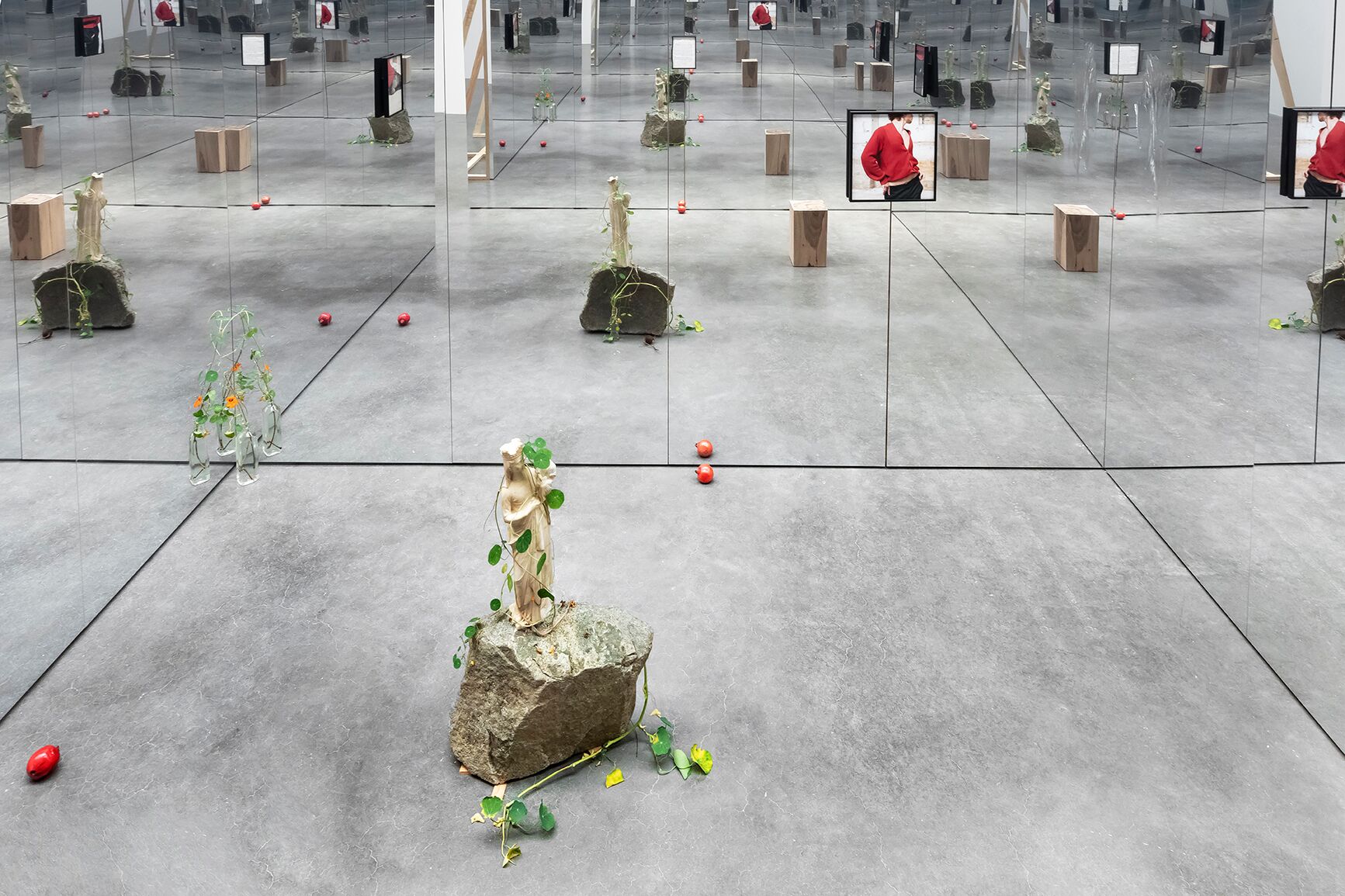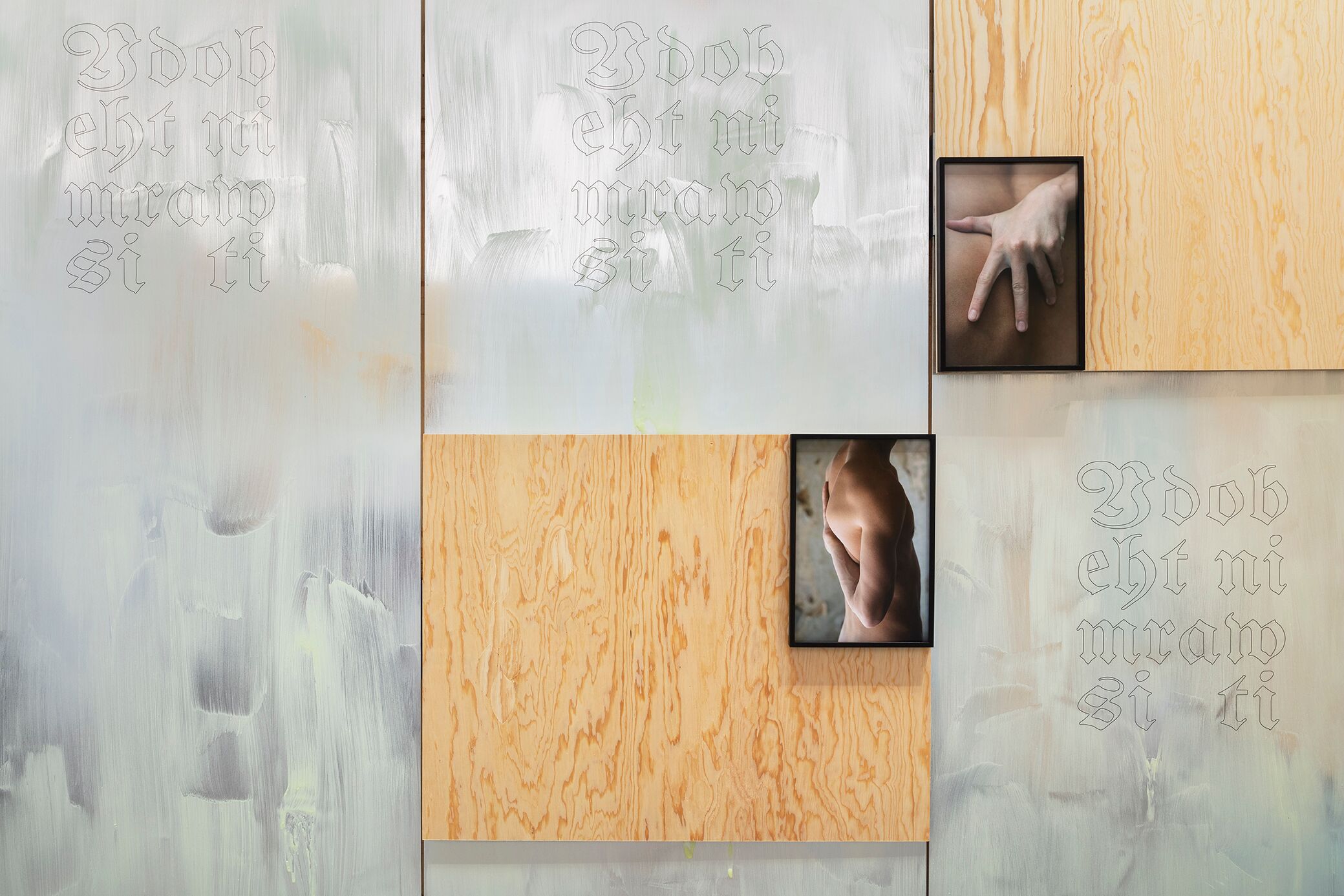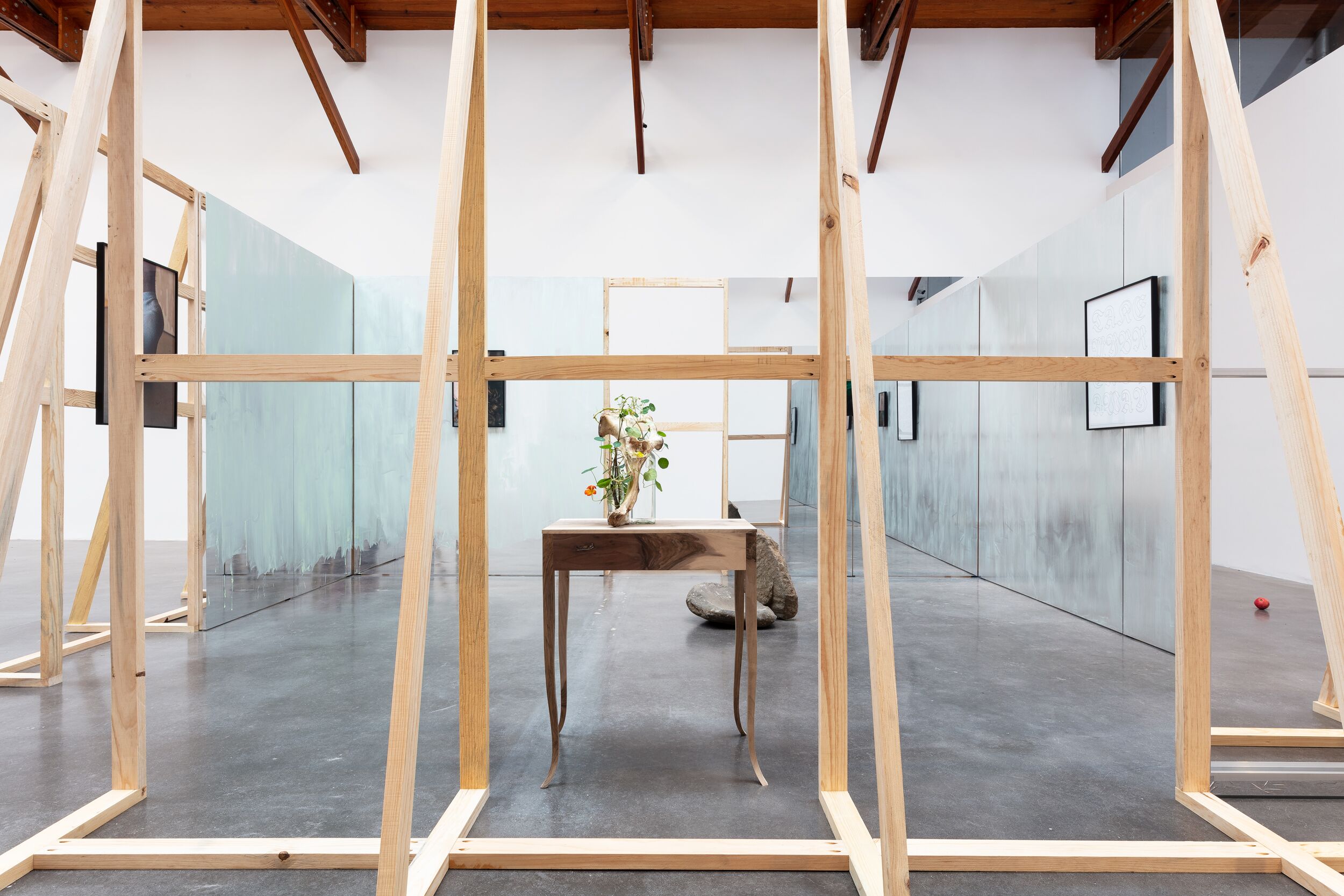
Review
Loved Ones | About Danh Vo
by Alan Sierra
At Kurimanzutto
Reading time
6 min
It is undeniable that grand narratives weigh considerably on our private lives. Although our individual characteristics are fluid, they take the forms of the containers into which they fall. We can observe this transit between the molecular and the molar in the show Danh Vo, currently exhibited in the gallery Kurimanzutto.
The artist’s practice is based on the interaction he maintains with friends and family. His work can be understood as drawing from the collaborations he has established with his loved ones:
I don’t really believe in my own story, not as something singular. It is woven with other people’s stories, local history, and geopolitics. I can see myself as a container that has received countless remnants of history without direction, and that is why I try to compensate for it. I am trying to give it sense and a personal intention.
— Danh Vo

The participation of Vo’s relatives in his work goes beyond the use of their professions. Vo seeks to twist the idea of authorship so that affective and political layers are combined in the resulting objects.
In one of his first projects, the artist involved his mother in the academic process of realizing the work. The institution demanded that the artist attend discussions related to his project. Instead of presenting himself, he ceded the place to her.
In the artist’s words:
It was about trying out multiple interactions, errors, reprimands, dialogues between me, the educational institution of art, the academy, and my family, who really didn’t know what I was doing in my studies.
Throughout his career, Vo’s most emblematic collaboration has been with his father, who for a fair price executes textual works according to his son’s instructions.
While not much older than a child in Vietnam, Phung Vo perfected his practice of calligraphy, a skill he continues to use in his Danish life. Phung does not speak any western language apart from a little Danish, and so for Danh Vo his father’s calligraphic production results in something he calls “an act of pure work.”
I believe that what is successful in my projects with my father is the creation not of bridges of understanding but rather bridges made through work. Although neither of us can understand the other, that can also unite us.
According to the introductory text by Katherine Brinson, curator of Danh Vo’s individual show at the Guggenheim Museum this year, Mr. Phung Vo is happy to be paid for a stable job he can do from his home in Copenhagen, sitting silently at his desk with his instant cup of coffee by his side.
Discretely titled using the artist’s name, the exhibition in kurimanzutto seems to allude to a moment when the artist visited a cemetery in Vietnam dedicated to those who died during the war. In that location a name very similar to his appeared on many of most of the gravestones. What at first appeared to be a shared name in fact meant “without name”: a textual label for anonymous graves. Such an anecdote serves to explain Vo’s ethical relationship with appropriation, in addition to his relations with his kin.
This exhibition presents works by another artist, Peter Bonde, supported by wooden structures. Bonde’s paintings are characterized by the use of broad and abstract gestures on reflective surfaces. In the gallery they are arranged so as to simulate the walls of modest interiors.

It is rumored that Bonde was the professor who advised Vo to stop making art while he was finishing his studies at the Danish Academy of Fine Arts. Below some of his paintings one can read phrases taken from The Exorcist using Phung Vo’s favorite typography. This gesture, ready for intervention, seems to imply changing, versatile, and permeable power relations.
In the exhibition rooms other elements are presented. A group of photographs of the artist’s nephew, taken by Heinz Peter Knes, rarefy the rooms. These images draw from his nephew Gustav’s interest in demonstrating the flexibility of his shoulder blades, which he calls “wings."
On the other hand, some furniture made of walnut holds vases with plants whose predominant characteristic is their adaptability. The mechanics of this work become clearer once we learn that the artist has a walnut orchard. His forest, originally dedicated to producing rifles, was given to him by Craig McNamara, son of Robert McNamara, the former United States Secretary of Defense. It is not entirely clear if this exchange purports to exorcise this family’s sad fame, but one can speculate that the works’ exhibition inaugurate their own endless exchange chains.

Sometimes Vo presents his objects without any intervention, allowing its internal contradictions to be revealed through the simple act of recontextualization. A few pomegranate fruits are displayed throughout the show, representing their homonymous (both pomegranates and grenades sharing the name “granada” in Spanish) weapons of war.
For the artist, the appropriation of material is the reappropriation of a story that was abruptly excised. A way to fill in some of the gaps in his own identity. At the same time, his work questions the idea that culture can be contained within the boundaries of a nation. Instead, it demonstrates an entity in constant flux, subject to the transformative processes of migration and exchange.
Although the use of everyday products in his work may allude to “readymade” art and to representation in mass culture, his approach is very different from that of such canonical strategies.
While the products deployed by Vo operate as markers of consumer desire, they also detach themselves from that category; in fact, they invoke speeches opposed to it. This interpretative potential is updated by taking into account the lives of objects that once belonged to other people or that are adjacent to historic events. In that sense, and in accordance with Brinson, they are more relics than “readymades.”
The eloquence of Vo’s objects and images comes from the repetition of the meanings they have acquired while moving around the world as a result of their cultural dislocation, their interchangeable property, or their proximity to historical incidents and personal narratives.
A trace or remnant can paradoxically allow for much more revelation than a coherent whole. Fragmentation also allows for the diffusion of a dense compression of a narrative ensemble.
Published on November 29 2019